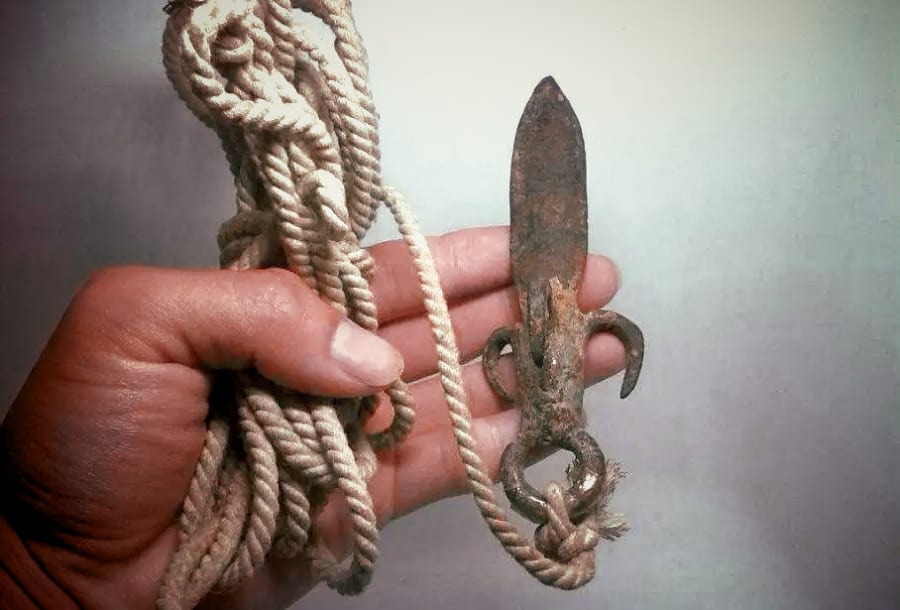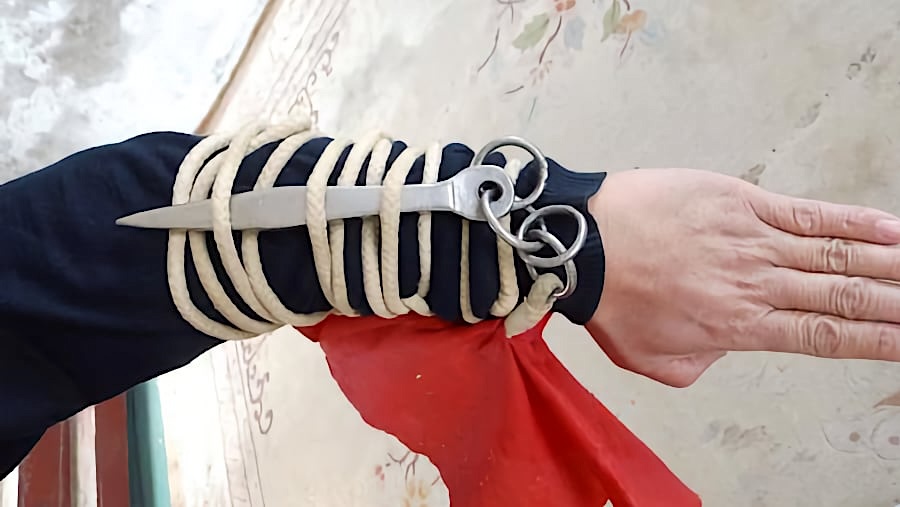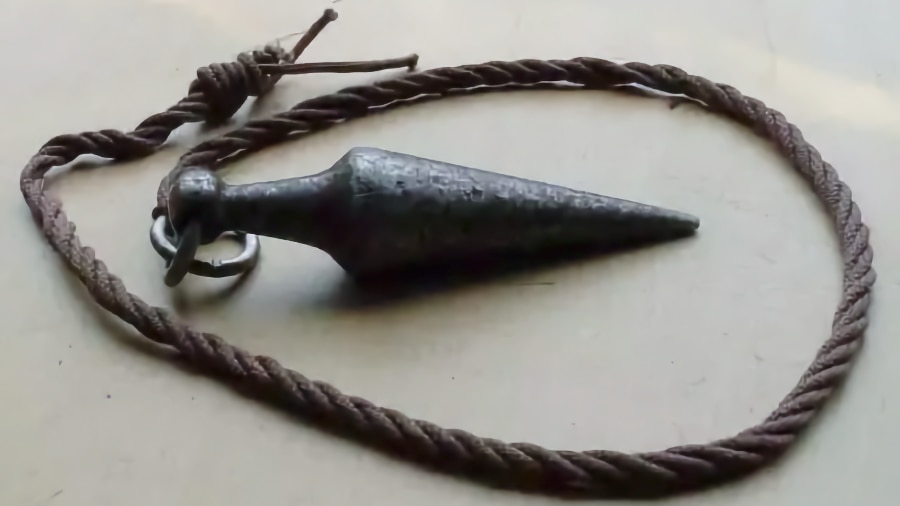
The shéng biāo 繩鏢, or ‘rope dart’.
The rope dart 繩鏢 or shéng biāo 繩鏢 in Mandarin is a type of soft weapon consisting of a darthead and rope. Among Chinese flexible hidden weapons, the most common types include the rope dart 繩鏢, meteor hammer 流星錘, flying claw 飛爪, and soft whip 軟鞭. The rope dart 繩鏢 features a long cord attached to the end of a metal dart. Its forms are generally divided into northern and southern styles.
The northern-style darthead is slightly larger than a standard throwing dart, about 200mm long and weighing around 300 grams. It has a pointed head and a wide, circular tail, with an iron ring attached for swinging. The southern-style darthead is only slightly longer than a finger and usually has a cylindrical body. These are broad descriptions though, and these weapons are not a standardised in any way.
Generally, the entire length of the rope dart is about twice the height of the user, though highly skilled practitioners with greater control may use a longer cord. There is no specific requirement for long rope darts, and the practitioner can choose the type according to specific need, terrain or application.
The shéng biāo 繩鏢 concept hinges on its design as a versatile dart weapon that allows for recovery and repeated use. Its structure naturally accommodates a wide array of force applications – throwing, whipping, circling, and even entangling. By combining a pointed metal dart with a flexible, durable cord, the rope dart provides the user with a broad range of offensive techniques.
When thrown, the dart travels swiftly, leveraging momentum and weight distribution for piercing impact. Whipping motions allow practitioners to direct rapid, fluid strikes at multiple angles, often surprising an opponent. The circling technique is key to building speed and preparing for follow-up strikes, while the length of the cord offers a level of range not typically seen in handheld weapons. This versatility enables users to adapt the rope dart to various combat situations, whether in close-quarters or at a distance, demonstrating its ingenuity as a weapon designed for repeated and dynamic attacks.
When not in use, the rope dart can be wrapped around the chest, waist or wrist. The dart is launched using a snapping motion of the arm and wrist, allowing it to strike distant opponents and then quickly retract. However, due to the length of the cord, achieving precision can be challenging and requires considerable practice.

The forearm method for carrying the rope dart 繩鏢 is an efficient technique that allows the weapon to be concealed, quickly deployed, and easily accessible in combat.
The rope dart 繩鏢, the modern term for this weapon, was once known as the thief dart 賊鏢 or zéi biāo in Mandarin. This original name reveals much about the weapon’s true origins and purpose. With this historical reference, we can trace the rope dart’s lineage back to the Warring States period (475–221 BCE) in Chinese history, where it served as a crucial tool for those skilled in stealth and evasion. (we have archeological evidence for this period and will present this information elsewhere)
The zéi biāo 賊鏢, often used interchangeably with the flying claw 飛爪, was invaluable to thieves and stealth practitioners of the time. Its design allowed for silent strikes, quick retraction, and versatile manipulation, making it ideal for covert operations where conventional weapons were too conspicuous. The rope dart’s origins in the shadows of ancient China mark it as a weapon crafted for subtlety, surprise, and the refined skill of those who mastered the art of concealment and precision.

A short version of the rope dart 繩鏢.
